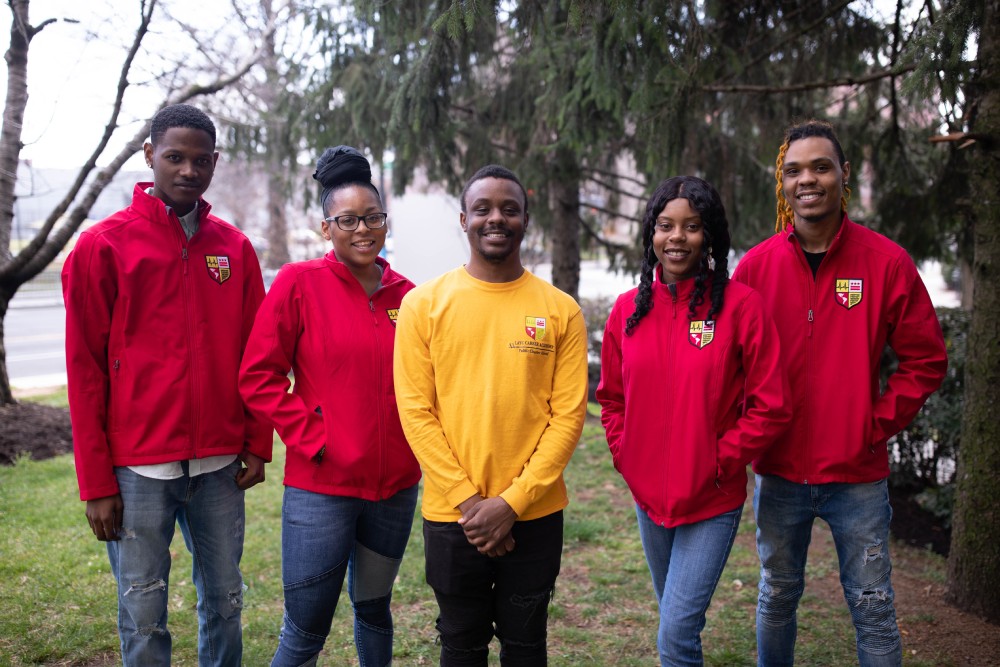On March 13, 2020, LAYC Career Academy offered its last full day of in-person classes before beginning more than a year of lockdown and virtual learning.
At Career Academy — an alternative public school that provides students aged 16-24 with literacy skills, college preparatory skills, college-credit classes, a GED pathway, and career preparation in health care and information technology — we have learned a lot about supporting older students during the pandemic and as we reopened our doors.
Student flexibility
Older youth from low-income families can struggle to fit school into very demanding schedules, as they balance work, childcare, and a plethora of other demands. The pandemic only made this harder, as our students were often the healthiest people in the household who are eligible to work. Many of Career Academy’s students took on more hours at work and increased caregiving responsibilities for children and sick relatives in the last year. So our students needed flexibility, and lots of it, to make school work.
Our students go to class while taking the bus to work. They call in from the janitor’s closet during their work breaks. Many can only do school work late at night after their shift ends or children have gone to sleep.
Career Academy created a highly flexible curriculum that allows students to participate by video call or on their own by completing assignments and watching videos. This flexibility put the onus on Career Academy, instead of students, to make school work. And we’ve seen some success. Our attendance has increased by 12 percentage points from Fall 2020 to Spring 2021.
Tweak, tweak, tweak
We found that constant iteration was the key to innovation. Over the last year, we tried many things and then changed them so that they would work better. We constantly changed our platforms, software, and ways that we offered learning to get it right. One example of tweaking is the design of our program for English Learners. Right after lockdown, we noticed a drop in engagement with our English Learner students. With constant feedback from our students, we were able to raise attendance and engagement by regularly dropping off packets at the homes of students who prefer paper to online assignments, changing our online software and online learning platforms.
During a pandemic, perfection isn’t possible on the first try, but trying again and again is not only possible, but what students deserve.
Learn from mistakes
As Career Academy constantly tried new things and innovated, we also tried things that did not work. Many students live in small, crowded apartments and found it difficult to call into classes due to a lack of quiet space. Career Academy started offering study halls at our school building to give students a quiet place to work. But not many students were able to attend. Because while homes were loud, our students also had too many caregiving responsibilities to be able to leave home. (And when students did come to the building, they wanted instruction, not study hall.)
So we discontinued our “study hall” program and we changed our focus to helping students find childcare and offered small in-person classes for our medical assistant and IT pathways, with specific support for English Learner students.
Check-in often
Starting in March 2020, each of our students received a call or text from a school student support specialist every day. In these calls, staff asked how students were doing academically, physically, and emotionally. We wanted our staff to know about challenges that students were facing so that they could connect them with resources and give them the support they needed to keep learning and stay healthy. For example, we learned that students did not only need food, but that they were having a tough time keeping their clothes and homes clean. We started sending students home with laundry detergent, soap, sponges, and dish detergent to help.
Students also responded to a “question of the day” as a community. The questions ranged from fun things like asking about a favorite movie to more serious topics like, if students planned to get vaccinated, had a preference for in-person learning, or if they had a thermometer at home.
This allowed staff to maintain a sense of community and also to gather important data they could use to better serve our student community.
Empathy is everything
Empathy was the centerpiece of our success over the last year. We offered new programming, listened to students, made tweaks, sought to understand more deeply, and made many more changes throughout the year. Sometimes empathy showed up in our work by not just asking about the need for food, but if there was a need for a microwave to heat food. Sometimes it showed up by allowing a student who works the night shift, a flexible deadline for their assignment. But no matter how it showed up, empathy helped us figure out how to configure our programming so that students could keep learning safely as circumstances changed over the last year.
As we embark on a broader reopening, there are some things that we hope to phase out — we really miss giving students high fives in the hallway! — and other things that may stay — Some students have really benefited from the flexibility of being able to do some coursework virtually. However, we plan to stick to an innovation approach that has worked so well for our students this year.
This article has also been published on Strongest Year Yet.
